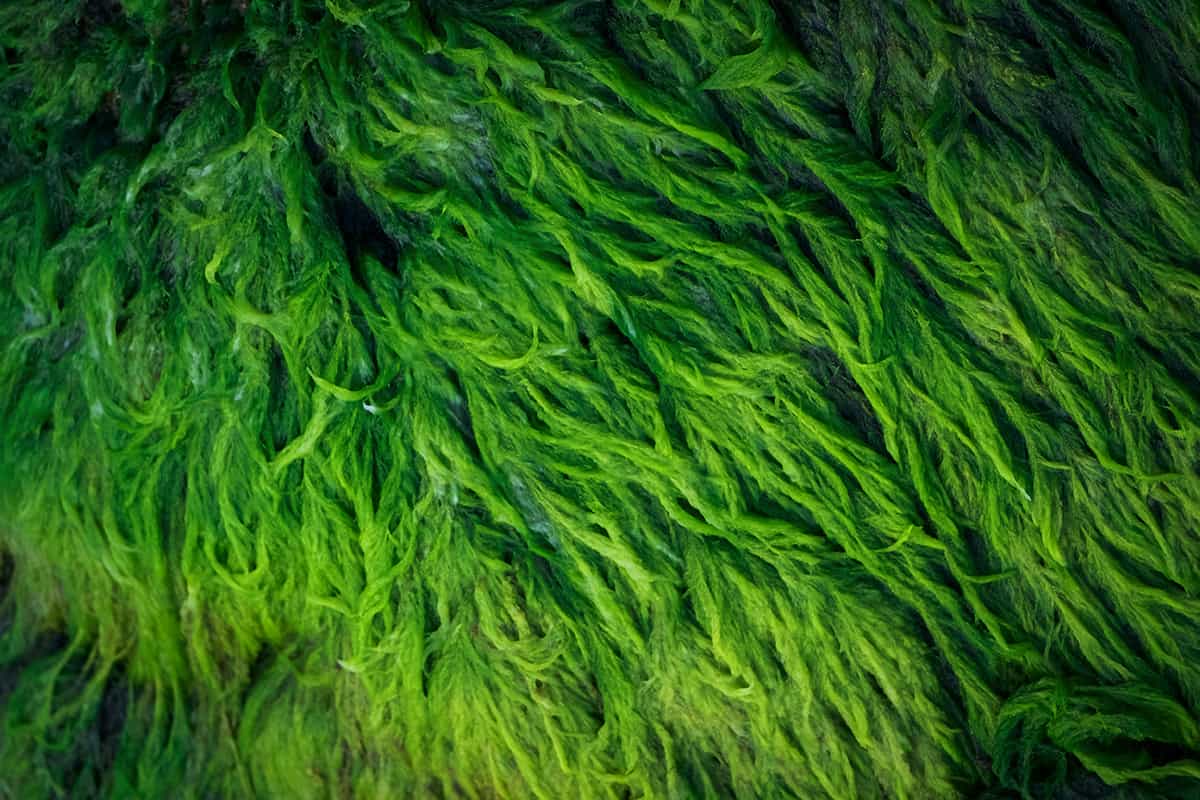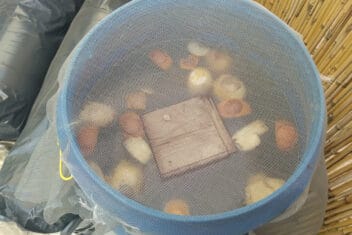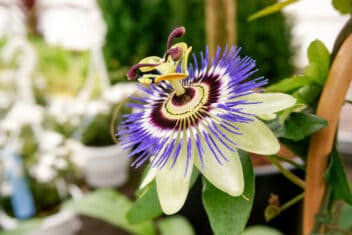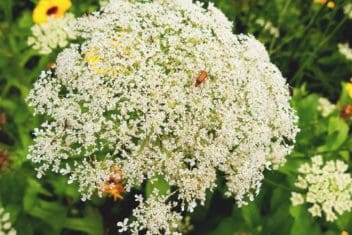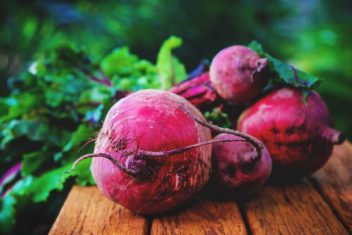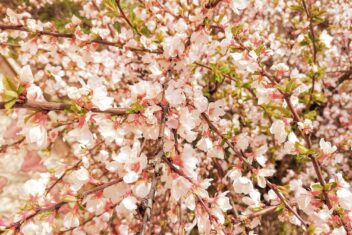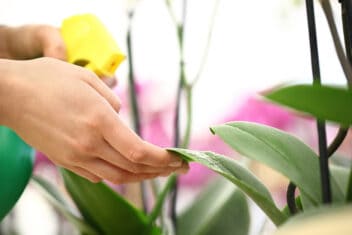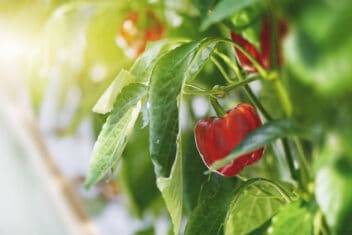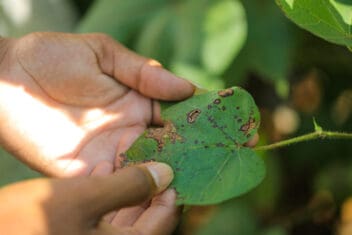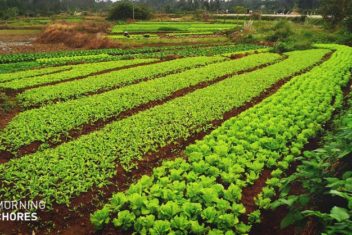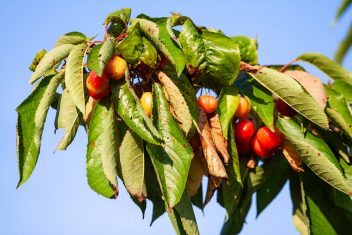If you’re a gardener who has a small body of water nearby, you’re in luck. Not just because you have a potential source of fabulous drinking water, but because of the beneficial nutrients you have at your fingertips.
Read on to learn how to turn pond, lake, and/or river plants into some of the best fertilizers around.
Freshwater Seaweed is Your Friend
Are you familiar with the term “freshwater?” It refers to any body of water that isn’t salty. Basically, this includes ponds, lakes, rivers, creeks, streams, and wetlands. These are the tributaries that carry groundwater into larger bodies such as seas and oceans.
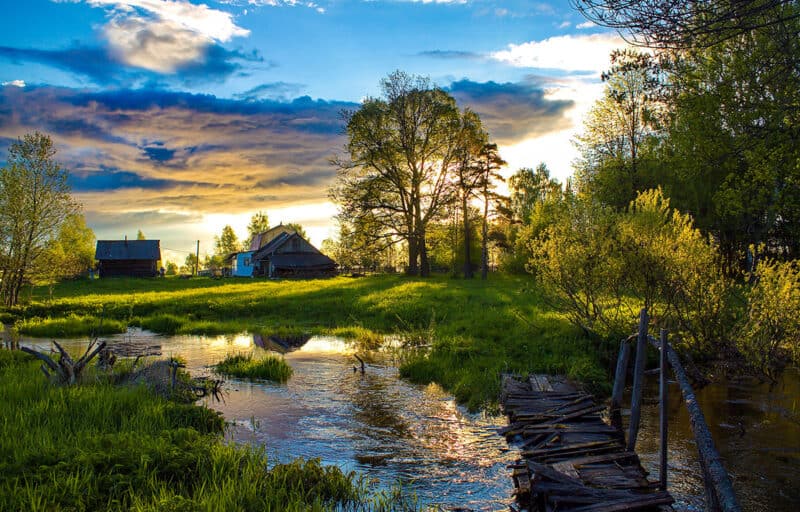
If you’ve ever gone swimming in natural outdoor water areas, you’ve likely noticed that there are a lot of aquatic plants out there. These can range from the long, slimy tendrils that like to tangle around your ankles to filamentous algae (not-so-fondly known as “scum”).
Of course, there are also countless pretty and delicious plants like water lilies and cattails, but we’re focusing on the gloppy ones today.
Additionally, “seaweed” refers to any aquatic plant that grows quickly. Most people think it just refers to oceanic plants like kelp or bladderwrack, but it’s an all-purpose term.
It is, however, a good idea to remember that there’s one massive benefit to freshwater varieties. Unlike oceanic seaweed, freshwater species don’t contain any salt.
This is important because salt can (and often does) damage soil irreparably. You’ve heard the phrase “to salt the earth” as a punishment?
In simplest terms, adding salt to the soil will render it sterile. We don’t want that. No, we want lush, healthy, compost-rich soil that will nurture our plants gorgeously.
How River Plants Can Help Your Garden
Although many people are creeped out by river plants’ slimy texture, they might think more fondly of them if they knew how beneficial they are to gardeners.
Aquatic plants such as algae, pond scum, and freshwater seaweed are packed with vital nutrients. They primarily contain nitrogen, which serves so many purposes in the garden environment.
Not only is nitrogen a primary nutrient for foliar growth (hello delicious leafy greens!), but it helps to break down compost as well.
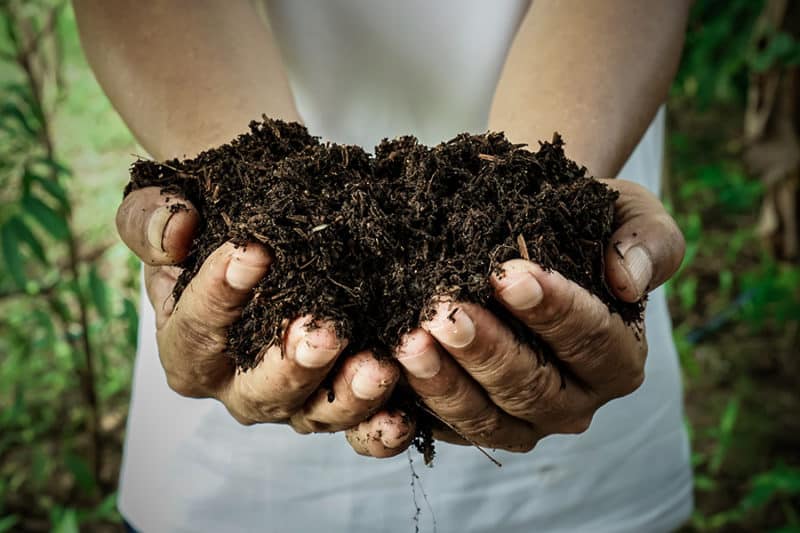
Aerobic bacteria feed on that nitrogen, at which point they can also reproduce. More beneficial bacteria = healthier compost, which breaks down beautifully to nourish your plants.
In addition to nitrogen, many of these pond, lake, and river plants deposit phosphorous and potassium. They’ve sucked nutrients out of the water and river mud, and now happily release it into your compost heap.
As an additional benefit, aquatic species don’t seem to carry any diseases that can transfer to land plants.
Compost it, Layer it, or Mulch It
The three main ways to use these river plants and other freshwater seaweeds are via compost, direct layering, or as mulch.
Compost Method
Composting is one of the easiest and most beneficial methods. We touched upon it above, but let’s get into it a bit more. One of the main reasons that composting is an ideal option is because of its wide-spectrum uses.
When you add river plants and seaweed into your compost pile, chances are you’ll be breaking it up and shifting it around a whole lot. Every time you turn the pile, adding new material, etc., you’ll disperse it throughout.
Then, when you take a scoop of compost out to use in the garden, it will have some seaweed in it. In contrast, the layering method will only benefit the actual bed(s) in which the river plants have been added.
To compost freshwater seaweed, make sure you have a lot of carbon-rich stuff in there first. This includes shredded paper, dead (crunchy brown) leaves, straw, or cardboard.
Then toss in your river plants, along with other nitrogen-rich bits like grass cuttings, coffee grounds, and veggie trimmings. The ratio of carbon to nitrogen should be 2:1.
Layering
This option is great if you’re doing hugelkultur mounds or raised beds.
Just make alternating layers of soil and seaweed, as though putting together a lasagna.
If you’re starting a raised bed from scratch, put down a layer of weed suppressant. Some people use gardening cloth, but you can also use a double-layer of untreated cardboard. Then put down a layer of pebbles or gravel for drainage.
Use soil made for container gardens in your raised beds, or else make your own. Add aged compost to your soil, along with an aerator like perlite or volcanic rock, vermiculite, or peat moss.
Put down a three- to four-inch layer of this, followed by a two-inch layer of seaweed. Then repeat as desired.
As the seaweed breaks down over time, it’ll continue to deliver nutrients into the bed.
In addition to nitrogen, many ponds and river plants also contain a fair bit of calcium. These make them ideal to use in beds that will nourish tomatoes, squashes, pumpkins, and other fruit-bearing plants susceptible to blossom-end rot.
Mulch
The last option happens to be one of the easiest. After harvesting your seaweed, just slop it around the base of your plants.
Apply it thickly, at least four inches deep, within 48 hours of harvesting. This stuff is going to shrink a LOT, and it breaks down very quickly. As it shrinks, pull it away from the base of your plants.
It’s best to keep your mulch from touching your plants’ stems, so just let them do their thing nearby.
Not only will this seaweed deposit oodles of nutrients as it breaks down, but it’ll also keep vital moisture in the soil as it does so.
Some Additional Tips:
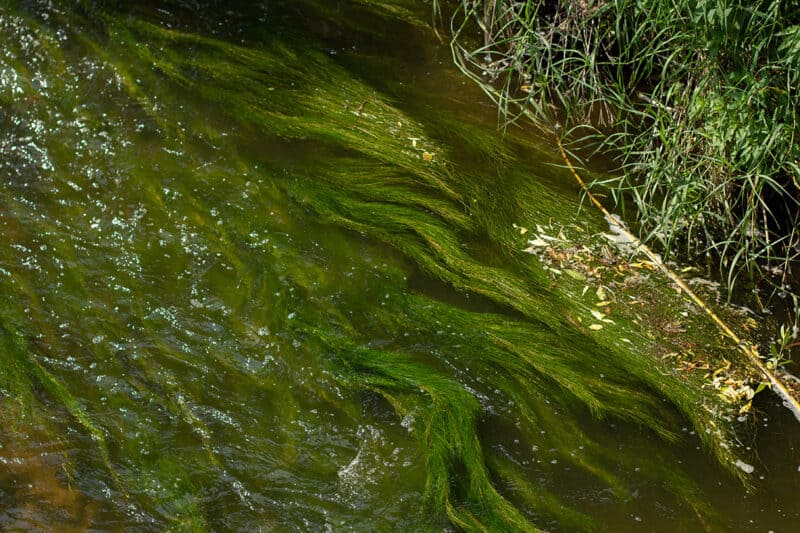
If you’ve harvested long, stringy river plants, chop them up before adding them to your beds or compost heap. Otherwise, they’ll get all tangled up and will be a nightmare to deal with.
Additionally, if you find that the seaweed is shrinking really quickly in the sun, make compost tea instead. Sometimes, especially in scorching weather, it’ll break apart faster than it can break down.
This means that it isn’t depositing its vital nutrients into your soil.
Instead, get yourself a used-but-still-functional blender from a local thrift shop. Then puree the seaweed in it, water it down, and offer it to your plants.
Just be sure to dedicate this blender solely to garden pursuits. Nobody wants to cross-flavor their favorite blueberry smoothie with algae.
Also, don’t wear any clothes that you like while harvesting this stuff. For some reason, pond and river plants stain clothes rather spectacularly. I went swimming while wearing a white shirt once, and I could never get the green streaks out of it.
A Final Note on Using Seaweeds and River Plants
Now, here’s a thing to consider: algae and seaweed can smell really funky. Additionally, not only does it smell gross, but dogs seem to love rolling in it.
If you have a canine companion who loves to play outdoors, chances are he’ll go wild rolling around in your compost or raised beds.
If you don’t just want to slop this stuff right into your grow beds, thus avoiding the pong, there are some alternative options.
One of these alternatives is to dry the plants out first. Spread them out on a tarp on a hot, sunny day, and let them shrivel up nicely.
This will eliminate the ungodly stench that can emanate from them. Once dried, you can crumble them into powder and mix that into your soil.
Another alternative is to use river or pond water as a type of compost tea. This only works if the water nearby is clean enough to be potable. The water will be full of delightful little nutrients, as well as plant bits and insect parts.
Just scoop up some buckets full of water, transfer the liquid to some watering cans, and use that to hydrate your plants at ground level.
